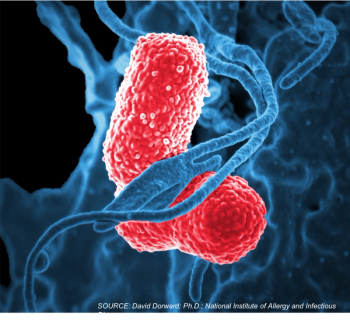
New study finds a decrease in S aureus infections in NICU following new guidelines for parent cleansing prior to skin-to-skin contact.

New study finds a decrease in S aureus infections in NICU following new guidelines for parent cleansing prior to skin-to-skin contact.

A new study underscores the importance of IP staffing and activities, but will we finally listen?

A new analysis finds samples of capillary blood are more likely than venous blood samples to indicate the presence of malaria.

In case you missed them, we’ve compiled a list of the latest recalls posted this week.

Stay up-to-date on the latest infectious disease news by checking out our top 5 articles of the week.

The FDA seeks a permanent injunction against a company selling unapproved hand sanitizers that claim to be effective against infections from several pathogens.

A new study suggests updating items included on terminal cleaning checklists to decrease bacteria in patient rooms and prevent further infection.

Collaboration and enhanced surveillance help find the source for an outbreak at Johns Hopkins Health System.

Having HIV increases cancer risk, but long-term viral suppression, as well as early treatment, can significantly lower chances of a cancer diagnosis.

This is the first new treatment for river blindness approved by the US FDA in 20 years.

Motif Bio submits a New Drug Application for iclaprim, a targeted Gram-positive investigational antibiotic for the treatment of acute bacterial skin and skin structure infections.

Single-dose vaccines delivered via a new technology platform may offer full protection against Zika, Lassa fever, and Ebola.

IMI/REL was effective against isolates from the United States and Europe.

A new study reveals that HIV clinicians may not be doing enough to monitor for opioid abuse/misuse among patients.

Researchers find that Treg cells could be vital in protecting infants in the womb from mother-to-child HIV transmission.

Molecular diagnostics provide faster, more complete results than traditional culture-based tests, and their use may improve outcomes for patients with chronic wounds and skin and soft tissue infections (SSTIs).

The CDC has announced an investigation of a multistate outbreak of Salmonella Adelaide infections that have been linked with pre-cut melon.

Researchers from the Chang-Gung Memorial Hospital find that half of influenza cases in patients admitted to the ICU received a false-negative rapid influenza antigen test.

In the past 17 years, the number of hospitalizations due to cUTIs has risen by 50%.

Emerging Candida species prove capable of virulent spread in health care facilities, leading to outbreaks.

Pooled analyses of 2 phase 3 trials have conclusively established the safety and effectiveness of iclaprim compared to vancomycin in the treatment of acute bacterial skin and skin structure infections (ABSSSI).

The President’s Forum at this year’s ASM Microbe meeting opened the eyes of many in the audience to the capacity of microorganisms to evolve.

The incidence of IE was lower in patients having a lower white blood cell count and lower numbers of platelets.

The results of a new study have revealed that carbapenem resistance conferred by plasmids can be transferred among unrelated bacteria in the health care setting.

The pooled results have hammered home the promise of eravacycline for the treatment of patients with cIAIs who are colonized by drug-resistant bacteria.

Anne Schuchat, MD, provides some history and insights on CDC’s role in safeguarding public health when the microbial world collides with the human world.

An extremely virulent (hypermucoviscous) strain of Klebsiella pneumoniae that is resistant to carbapenem and colistin has been isolated for the first time from a patient in the United States.

Sixty-nine out of the 70 colistin-resistant isolates had either mcr-1 and/or mcr-3 genes.

Researchers from the University of Mauritius identify factors that impact the growth of pathogens on kitchen towels, which can potentially result in food poisoning.

Empiric use of fluoroquinolones looks to be an alternate option for the treatment of gram-negative bloodstream infections when risk factors for antimicrobial resistance are not present.